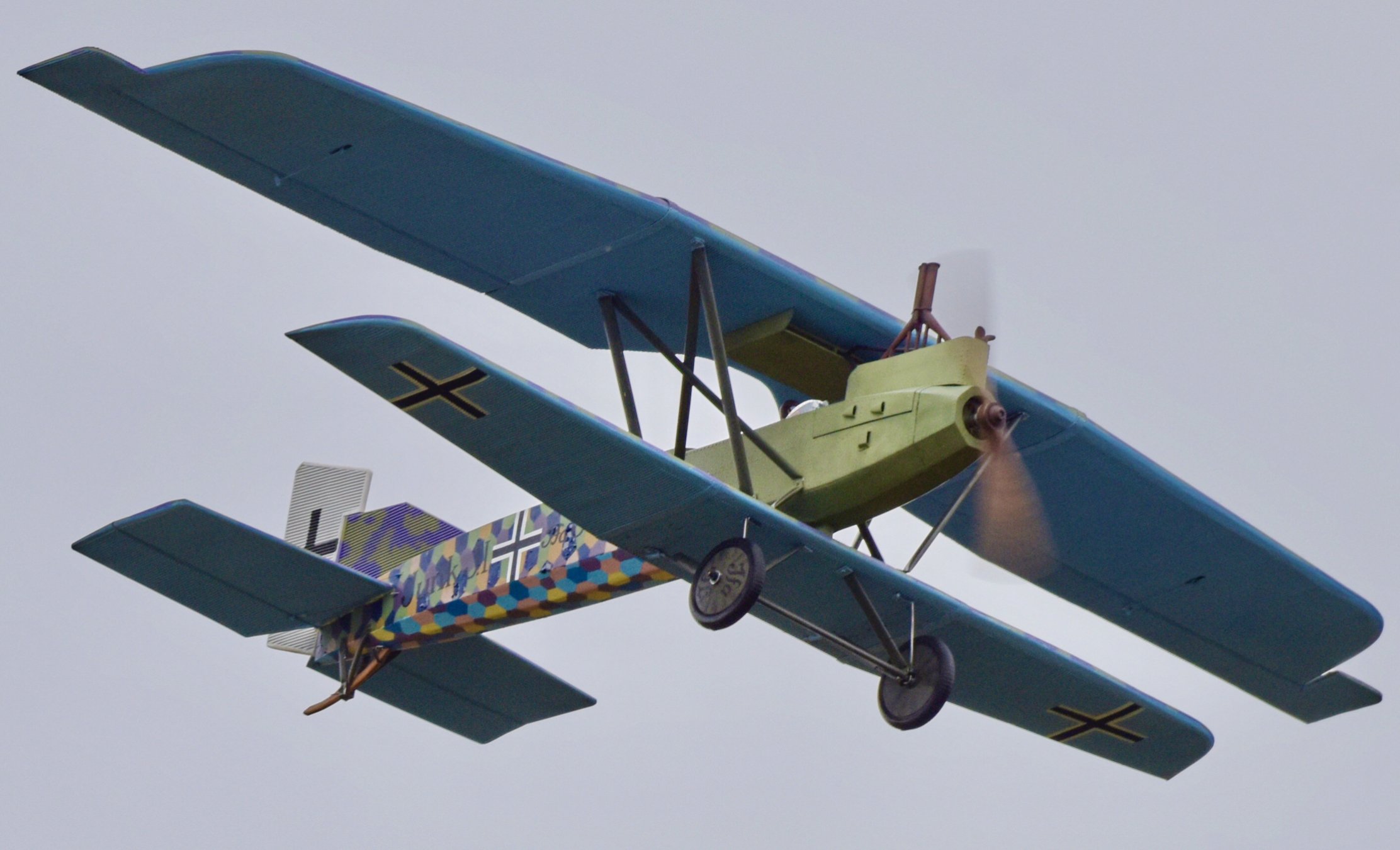
Jon Harper
Members-
Posts
62 -
Joined
-
Last visited
-
Days Won
1
Jon Harper last won the day on November 25 2021
Jon Harper had the most liked content!
Recent Profile Visitors
362 profile views
Jon Harper's Achievements
30
Reputation
-
Thought I would post this corrected flight video link for my Junkers J1 that we flew this fall and is included in the Feb 2022 Parting shot. I must have made a typo for the link. Apologies. The Junkers J.1 (actually manufacturers # J4) was a ground support and reconnaissance biplane. Nicknamed the Mobelwagen “furniture van", or “Moving Van” or the “flying tank”. The J.I was very rugged and well liked by its crews despite its clumsy handling, entering front line service in August 1917 with the official name of “Junk 1”. The J.I was the first almost all metal mass produced “in service” aircraft with a cantilevered sesquiplane wing configuration sheeted in 2mm thick corrugated duraluminum. The front of the fuselage was wrapped in a 1/4” steel armour plate tub (weighting 470kg, 1,040 lbs) protecting the engine, fuel tanks, radio gear, and crew - making it almost invulnerable to ground fire. The rear fuselage was formed with a duraluminum tubular frame covered in fabric. Flying surfaces were controlled by pushrods rather than flying wire to resist ground fire. Most losses occurred during landings and takeoffs. A weight comparison: the Junkers J1 weighed 4700lbs, a Sopwith Camel weighed around 1450 lbs, and a DR1 weighed about 1290lbs. Our local aviation museum (CASM) kindly allowed my friend Chuck and me to bring my J1 model for comparison photos with the actual J1 serial 586/18 which I have also included. 2nd flight link here: https://youtu.be/Sp3NyVGBPc4 Long flight with wheels off landing https://youtu.be/pu8spy1-crE Part flight and landing https://youtu.be/QW_e2NtTQqs The Build thread here: https://www.rcgroups.com/forums/showthread.php...
-
If some one is interested in trying to scratch build one of these, attached are my “design” drawing scribbles I used to build it. Yes they are messy but it is most of what you need to know how to build it. I think you will need high intermediate to craftsman building skills. If you have built 4 larger balsa kits you probably have the skills to do this. First I enlarged the 3 view below to the scale I wanted. Then figured out the structure for the wing and fuselage pod. The last photo is the drawing where I drew out the fuselage former profiles. If you do try to build it you can follow my build thread on RCG. I did have to fix some mistakes here and there along the way. Finding the right size carbon fibre tubes for the fuselage booms is critical. If you can’t find those, I don’t think anything else would be light and strong enough not to break or bend on takeoff and landing. https://www.rcgroups.com/forums/showthread.php?3318791-Research-Build-of-1916-Blackburn-Triplane-Zeppelin-Hunter-FLIES
-
Since snow has arrived here, this is the last flight video and flight photos of the season! Time to break out the skis! This old crate is a dreamboat to fly. So easy it should be a trainer. Going to miss flying it until spring. Video and pics by my friend Chuck, some pics by Hal. Jon last flight of the season vid link
-
Wow fantastic, had not seen this one. Photo attached of his pilot licence signed by a Wright brother. thanks for posting the clip of 90 year old Wittman! appreciated, Jon
-
Pete, Signed plans! Wow, that is really cool! I built Chief OshKosh to 1/4 scale so the 16ft wingspan became a 4ft scale model. Over the years, Wittman kept reducing the wingspan until is was 12ft in 1937 when it crashed (can you say “not enough lift!”). Undeterred, Wittman took the Chief’s wreckage and created another successful pylon racer called Buster. To answer your question if you do 1/3rd scale, you probably only need 1/4 of the ribs structurally, but one of the characteristics of Bonzo’s wings is the ridiculous number of ribs. As a result, you could consider reducing the number of ribs by 1/3 since the spacing would still look tight, laser or CNC cut from 1/16” balsa sheet with lightening holes, and wing tube holes. Include 1/8” or 3/32” ply ribs at connection points. Rather than a wing tube, have you considered carbon fibre tubes? Super light. The Chief OshKosh wings is way more rigid that necessary, so I would reduce the structure if I built another. Shockingly the 4ft wing weighed 1lb….I am sure I could build another doing in under 3/4lb with no struc compromise. The pic of my over structured Chief OshKosh wing below should be significantly reduced. Really only needed 1 carbon fibre tube with one built up spar. The leading and trailing edges provide a lot of stiffness as well. I would have more lightening holes cut too. Enjoy your build.
-
I found this scale drawing of Bonzo a few years ago. Has everything needed for a scratch build own design. Hope it is useful.
-
Robert, It is great that you are building Bonzo. Steve W built Bonzo after he built Chief OshKosh. It is very easy to see the tail, rear fuse and wing similarities. When you fly Bonzo, consider flying it a full throttle. It took me two years to realize that is how Chief OshKosh needs to be flown….it’s a pylon racer after all. Assuming it flies the same - you will really enjoy flying Bonzo! The pics are all of Chief OshKosh for comparison with Bonzo. If I built the wing again, I would use half the number of ribs compared to scale to reduce weight. Good luck with the build! Jon



